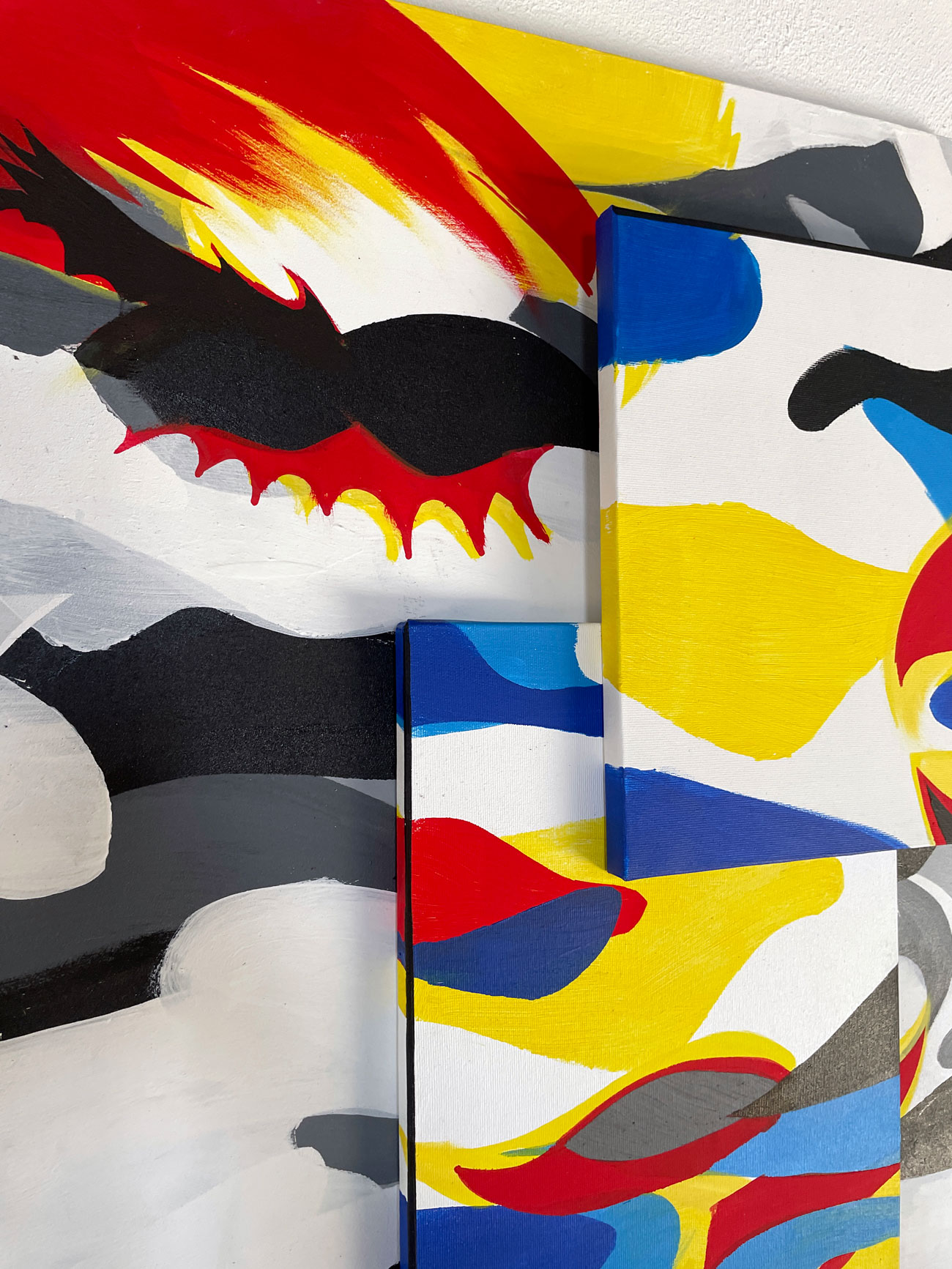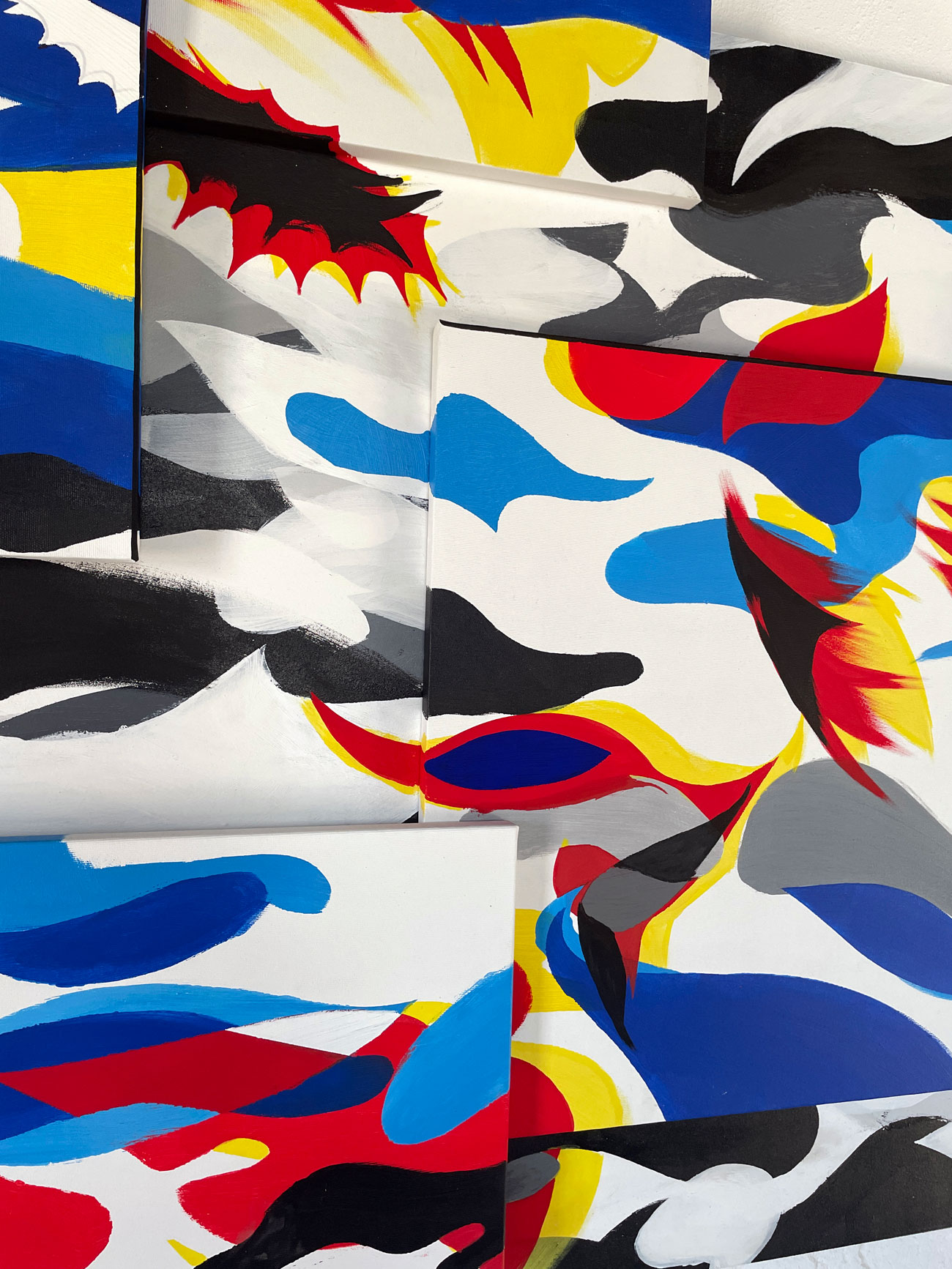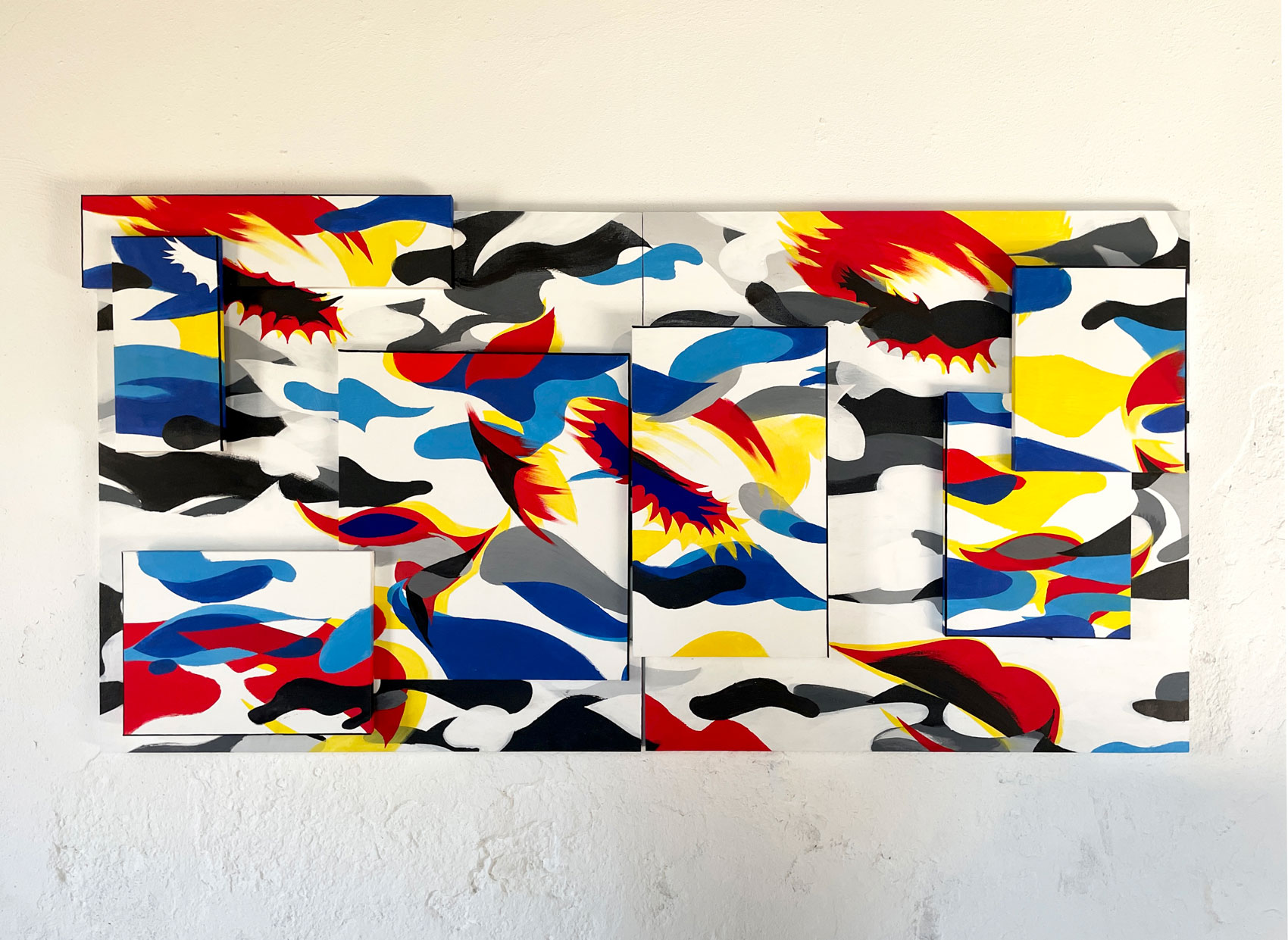Surface



Surface acrylic and markers different layers of canvas 182×82 cm – 2025
Portrait, Dissolution, and Contaminated Surface
The work moves along an ambiguous boundary between visibility and dissolution. Fragmented, almost atomized, it does not present a face, but rather a multiplicity of traces, presences, and disappearances. Camouflage—historically tied to concealment—here frees itself from its original function: it does not hide to protect, but reveals through subtraction.
The face, central element of the work, is not a recognizable identity but an identity camouflage. Each feature is a clue, each fragment a potential expression. Identity is not given, but constructed over time—like an emotional, narrative, and social collage. The face does not disappear to vanish, but to multiply.
The subjects evoke familiar silhouettes, shaped by textures and forms that recall standardized aesthetic patterns. They are faces that seem to belong to everyone and no one: camouflaged by ideals, serial reflections of a collective imaginary. The face is no longer a “who,” but a “how”: how you seem, how you appear, how you are perceived.
The surface is contaminated by mimetic patterns that invade the face, bleach it, dissolve it. Camouflage becomes a critical ornament, a decorative language that empties any promise of recognition. There is no longer a distinction between subject and background: skin becomes environment, environment becomes skin.
The work becomes a field of tension: identity is present only in its visible absence, in the way it merges, fractures, and repeats. The human figure is there, but absorbed by the surrounding space—a presence that reveals itself just as it retreats. It is an echo, not a voice.
In DutyGorn’s work, camouflage abandons its military and strategic semantics to become an aesthetic of confusion and threshold. It does not defend, but disorients. It does not protect, but problematizes: Who is watching? Who is being watched? Who is the subject? Who is the environment?
This work, in its deconstruction, does not seek a stable identity, but questions its instability. Through camouflage, the portrait becomes a site of friction—between body and culture, between aesthetics and disappearance, between subject and surface.
It is a portrait in dissolution, where the face becomes a critical and poetic device, ready to unmask what we have grown used to recognizing.
